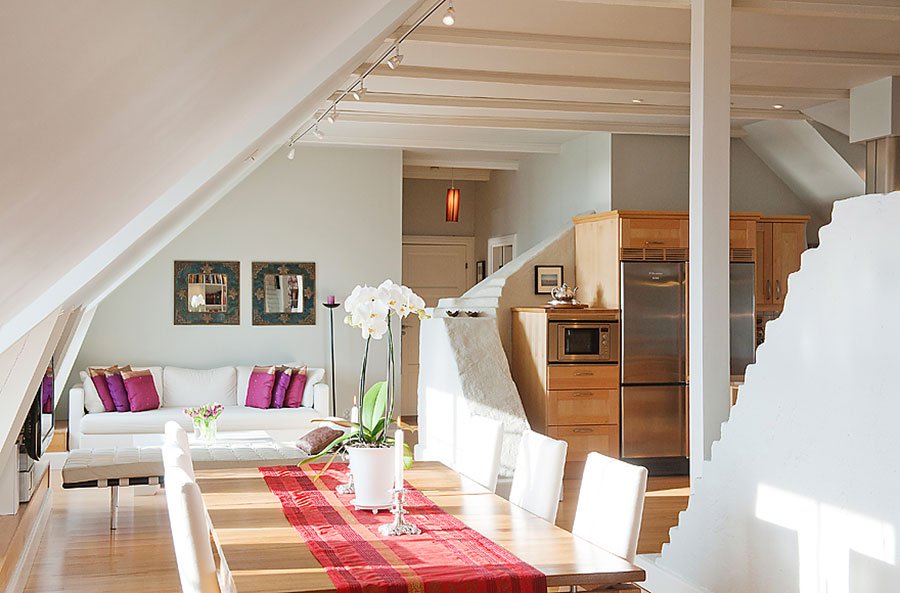#8284. Modern Attic: Elegant Integration of Functional Zones Under a Sloped Roof

This refined interior demonstrates masterful use of space under a sloped roof, turning a potential limitation into an architectural advantage. The open floor plan unites the living room, dining area, and kitchen into a single harmonious space, creating a sense of spaciousness and light. The designer has managed to preserve the original structural elements—exposed ceiling beams—which bring character and structural rhythm to the room.
The color palette is based on neutral light tones that visually expand the space, while bright accents—fuchsia pillows on the sofa and a red runner on the dining table—create necessary color dominants. These inclusions of saturated hues enliven the calm base of the interior.
The skillful zoning of the space deserves special attention. The kitchen with light wood facades is separated from the living room by a low partition, which maintains a visual connection between the zones while functionally delimiting them. Stainless steel appliances add a modern touch to the warm natural aesthetic of the wooden elements.
Lighting plays a key role in creating atmosphere: track lighting on the ceiling provides adjustable directional illumination, emphasizing architectural features and creating various scenarios for using the space. When designing the facade of a country house, a similar approach to lighting can be used to highlight structural elements and textures of materials.
The furniture is laconic and elegant, with clean lines and simple forms, contributing to the overall sense of restrained luxury. The white sofa, complemented by pink pillows, creates a cozy relaxation area, while the dining table with white-upholstered chairs serves as a connecting link between the living room and kitchen. Live plants, including an expressive orchid, give the interior vital energy and completeness.
This is an example of how attic space can be transformed into a modern, functional, and aesthetically pleasing dwelling where every element is carefully thought out and is in perfect balance with the whole.